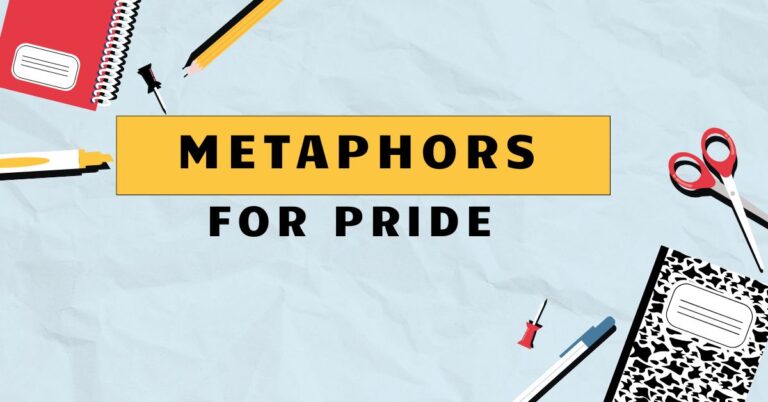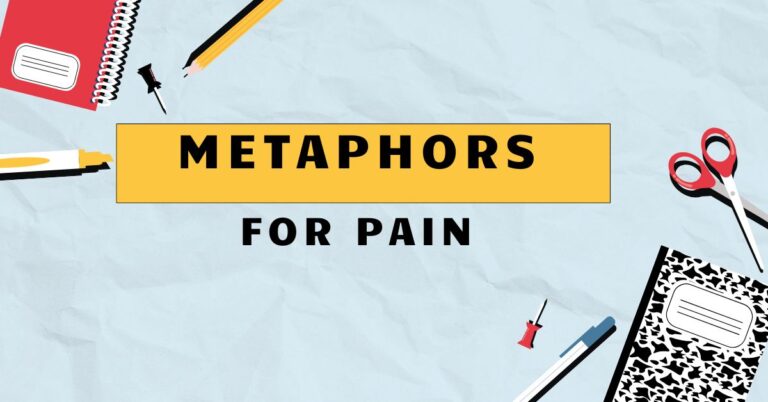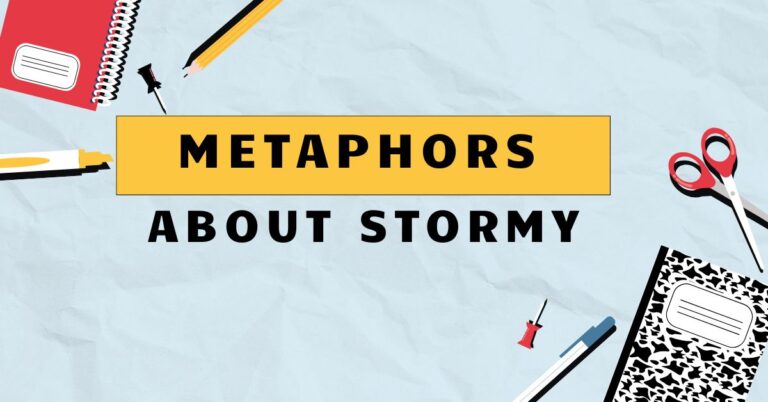33 Metaphors for Loneliness: Understanding Figurative Language
Loneliness is a complex and deeply human emotion, often difficult to express directly. Metaphors provide a powerful tool for conveying the nuances of this feeling, allowing us to connect with others and understand our own experiences more profoundly.
This article explores the use of metaphors for loneliness, examining their structure, types, and usage, offering a comprehensive guide for English language learners and anyone seeking to better articulate the experience of isolation. Understanding these metaphors enhances both expressive writing and interpretive reading skills, allowing for a richer understanding of literature, poetry, and everyday conversation.
This guide will benefit students, writers, and anyone interested in exploring the expressive power of language to articulate complex emotions.
By the end of this article, you will have a deeper understanding of how metaphors work, how they are used to express loneliness, and how you can use them effectively in your own writing and speech. You’ll also learn how to identify and interpret metaphors for loneliness in the works of others.
Let’s begin our exploration of metaphors and loneliness.
Table of Contents
- Definition of Metaphor
- Structural Breakdown of Metaphors
- Types of Loneliness Metaphors
- Examples of Metaphors for Loneliness
- Usage Rules for Metaphors
- Common Mistakes with Metaphors
- Practice Exercises
- Advanced Topics in Metaphorical Language
- Frequently Asked Questions
- Conclusion
Definition of Metaphor
Ametaphoris a figure of speech that directly compares two unlike things without using “like” or “as.” It asserts that one thing *is* another, implying a similarity or shared quality between them. Unlike similes, which explicitly state the comparison, metaphors create a more implicit and imaginative connection.
Metaphors are essential for adding depth, color, and emotional resonance to language. They enable us to understand abstract concepts by relating them to more concrete or familiar experiences.
The effectiveness of a metaphor lies in its ability to create a vivid image or feeling in the reader’s mind.
Metaphors function by transferring qualities from one domain (the source domain) to another (the target domain). In the context of loneliness, the target domain is the feeling of isolation, while the source domain could be anything from a desolate landscape to a broken object.
By understanding this transfer, we can better appreciate the power and subtlety of metaphorical language. For instance, saying “Loneliness is a vast desert” transfers the qualities of aridity, emptiness, and isolation from the desert to the feeling of loneliness.
Metaphors are used in various contexts, from everyday conversation and literature to scientific discourse and political rhetoric. They serve different purposes depending on the context, including explaining complex ideas, persuading audiences, and evoking emotional responses.
In literature, metaphors are often used to create symbolism and enhance the thematic depth of a work. In everyday speech, they can add color and expressiveness to our communication.
Understanding the function and context of a metaphor is crucial for accurate interpretation.
Structural Breakdown of Metaphors
The structure of a metaphor can be broken down into two main components: thetenorand thevehicle. The tenor is the subject to which metaphorical attributes are ascribed (in this case, loneliness).
The vehicle is the object or concept whose attributes are borrowed to describe the tenor. Understanding the relationship between the tenor and the vehicle is essential for interpreting the meaning of a metaphor.
The vehicle should illuminate the tenor, providing a new perspective or understanding.
Consider the metaphor “Loneliness is a heavy cloak.” Here, “loneliness” is the tenor, and “a heavy cloak” is the vehicle. The metaphor suggests that loneliness is something that weighs you down, restricts your movement, and is difficult to remove.
The qualities of the vehicle (heaviness, restriction) are transferred to the tenor (loneliness), helping us to understand the emotional burden of isolation. The effectiveness of the metaphor depends on how well the vehicle captures and conveys the intended meaning of the tenor.
It is important to consider how these elements interact.
Another important aspect of metaphorical structure is theground, which refers to the shared characteristics between the tenor and the vehicle that make the metaphor meaningful. In the example above, the ground is the feeling of being weighed down or burdened.
Identifying the ground helps to understand why the particular vehicle was chosen to represent the tenor. A strong metaphor will have a clear and compelling ground, making the connection between the tenor and the vehicle easily understandable.
Without a clear ground, the metaphor may seem arbitrary or confusing.
Types of Loneliness Metaphors
Metaphors for loneliness can be categorized based on the source domain from which the vehicle is drawn. Common categories include nature metaphors, weather metaphors, object metaphors, place metaphors, and body metaphors.
Each category offers a different perspective on the experience of loneliness. Understanding these categories can help us to identify and interpret a wider range of metaphors for loneliness.
The choice of category often depends on the specific aspect of loneliness that the writer or speaker wishes to emphasize.
Nature Metaphors
Nature metaphors use elements of the natural world to describe loneliness. These metaphors often evoke feelings of isolation, emptiness, and desolation.
Examples include comparing loneliness to a barren landscape, a solitary tree in a field, or a vast, empty ocean. These metaphors tap into our primal understanding of nature to convey the profound sense of being alone.
The use of nature can be very effective in expressing the vastness and indifference that can accompany loneliness.
The imagery associated with nature metaphors can be particularly powerful. A barren landscape suggests a lack of emotional nourishment, while a solitary tree evokes a sense of being isolated and exposed.
A vast, empty ocean highlights the feeling of being lost and insignificant. These images resonate with our deep-seated feelings about our place in the world.
Therefore, nature metaphors can be an effective way to communicate the emotional impact of loneliness.
Weather Metaphors
Weather metaphors use weather conditions to represent the feeling of loneliness. Common examples include comparing loneliness to a cold, gray day, a dark and stormy night, or a relentless, driving rain.
These metaphors often convey a sense of emotional bleakness, turbulence, and oppression. Weather metaphors are effective because they tap into our personal experiences of how weather can affect our mood.
Different types of weather can evoke different aspects of loneliness. A cold, gray day may suggest a sense of emotional numbness and detachment, while a dark and stormy night can represent the fear and anxiety that can accompany isolation.
Relentless rain may symbolize the persistent and overwhelming nature of loneliness. These metaphors create a visceral connection to the feeling of loneliness, making it more relatable and understandable.
Object Metaphors
Object metaphors use inanimate objects to symbolize loneliness. Examples include comparing loneliness to a broken mirror, an empty room, or a locked door.
These metaphors often convey a sense of fragmentation, emptiness, and exclusion. Object metaphors are effective because they create a tangible representation of an abstract emotion.
The choice of object can greatly influence the specific nuance of loneliness being conveyed.
A broken mirror may suggest a shattered sense of self, while an empty room can represent a lack of connection and stimulation. A locked door may symbolize the feeling of being shut out from social interaction and intimacy.
These objects provide a concrete image that helps to understand the emotional impact of loneliness. The simplicity of object metaphors can make them particularly powerful and accessible.
Place Metaphors
Place metaphors use specific locations to represent loneliness. These can be physical places, such as a deserted island or a crowded city where one feels invisible, or metaphorical places, such as “a dark corner of the mind.” Place metaphors evoke a sense of physical or emotional isolation.
The specific characteristics of the place contribute to the overall feeling of loneliness.
A deserted island, for example, might highlight the feeling of being completely cut off from civilization and human contact. A crowded city, where one feels invisible, can emphasize the feeling of being alone even in the midst of others.
“A dark corner of the mind” can represent the hidden, painful aspects of loneliness that are difficult to confront. Place metaphors are effective because they create a spatial dimension to the experience of loneliness.
Body Metaphors
Body metaphors use physical sensations and conditions to describe loneliness. Examples include comparing loneliness to a heavy heart, an empty stomach, or a cold shiver.
These metaphors often convey a sense of physical discomfort, emotional pain, and vulnerability. Body metaphors are effective because they connect the abstract feeling of loneliness to concrete physical experiences.
A heavy heart may suggest the emotional burden of loneliness, while an empty stomach can represent the lack of emotional nourishment. A cold shiver might symbolize the feeling of fear and vulnerability that can accompany isolation.
These metaphors highlight the physiological impact of loneliness, demonstrating how it can affect our physical well-being. The directness of body metaphors makes them particularly impactful.
Examples of Metaphors for Loneliness
Here are some examples of metaphors for loneliness, organized by category, to illustrate the various ways this emotion can be expressed through figurative language. These examples showcase the versatility and power of metaphors in conveying the complexities of loneliness.
Understanding these examples will help you to identify and interpret metaphors for loneliness in various contexts.
The following tables provide a comprehensive list of metaphors categorized by type. Each table includes a variety of examples to illustrate the different ways in which loneliness can be expressed metaphorically.
These examples will help you to develop a deeper understanding of the nuances of metaphorical language.
Nature Metaphors Examples
This table shows a range of nature metaphors used to describe loneliness, highlighting the sense of isolation, emptiness, and desolation.
| Metaphor | Explanation |
|---|---|
| My heart is a desolate wasteland. | Suggests emotional emptiness and lack of growth. |
| Loneliness is a solitary tree in a barren field. | Emphasizes isolation and exposure. |
| I feel like a lone wolf howling at the moon. | Conveys a sense of wild, untamed isolation. |
| Her spirit was a frozen tundra. | Implies emotional coldness and lack of warmth. |
| His soul is a vast, empty ocean. | Highlights the feeling of being lost and insignificant. |
| Loneliness crept in like a creeping vine, suffocating her joy. | Suggests that loneliness gradually takes over. |
| He was a single grain of sand on an endless beach. | Highlights the feeling of insignificance and anonymity. |
| Her heart was a withered flower. | Implies a loss of beauty and vitality due to loneliness. |
| Loneliness is a dark forest with no path. | Conveys a sense of being lost and disoriented. |
| I am a solitary mountain, standing alone against the sky. | Emphasizes strength and resilience despite isolation. |
| His life felt like an endless winter. | Suggests a prolonged period of emotional coldness and hardship. |
| She felt like a fallen leaf, drifting aimlessly. | Conveys a sense of being rootless and without purpose. |
| Loneliness is a barren desert, devoid of life. | Emphasizes the lack of emotional nourishment and connection. |
| He was a lone star in a vast, dark sky. | Highlights the feeling of being unique but isolated. |
| Her heart was a silent, empty cave. | Implies a sense of hollowness and lack of warmth. |
| Loneliness is a wild, untamed wilderness. | Conveys a sense of being lost and vulnerable. |
| He felt like a broken branch, severed from the tree. | Emphasizes the feeling of being disconnected and incomplete. |
| Her soul was a parched earth, longing for rain. | Implies a deep need for emotional nourishment and connection. |
| Loneliness is a silent, empty canyon. | Conveys a sense of vastness and isolation. |
| He felt like a single raindrop in a vast ocean. | Highlights the feeling of insignificance and anonymity. |
| Her heart was a desolate island. | Implies complete isolation and detachment. |
| Loneliness is a forgotten path in the woods. | Conveys a sense of being lost and overlooked. |
| He was a lonely lighthouse, shining in the dark. | Emphasizes the feeling of being isolated but providing guidance. |
| Her soul was a silent, empty field. | Implies a lack of growth and vitality due to loneliness. |
| Loneliness is a vast, unexplored territory. | Conveys a sense of being lost and uncertain. |
Weather Metaphors Examples
This table illustrates weather metaphors that capture the emotional bleakness, turbulence, and oppressiveness associated with loneliness.
| Metaphor | Explanation |
|---|---|
| Loneliness is a cold, gray day. | Suggests emotional numbness and detachment. |
| My heart is shrouded in a perpetual fog. | Implies a sense of confusion and uncertainty. |
| She felt like a storm was brewing inside her. | Conveys a sense of inner turmoil and emotional upheaval. |
| His soul was drenched in relentless rain. | Highlights the persistent and overwhelming nature of loneliness. |
| Loneliness is a dark and stormy night. | Represents fear and anxiety associated with isolation. |
| A chilling wind of loneliness swept through her. | Suggests a sudden and intense feeling of isolation. |
| He was caught in a downpour of despair. | Highlights the overwhelming nature of sadness and loneliness. |
| Her heart was frozen in a winter of solitude. | Implies a prolonged period of emotional coldness. |
| Loneliness is a relentless, driving rain. | Conveys the persistent and overwhelming nature of isolation. |
| He felt like a cloud of sadness was hanging over him. | Suggests a persistent and oppressive feeling of gloom. |
| Her spirit was weathered by years of solitude. | Implies that loneliness has taken a toll on her emotional strength. |
| Loneliness is a thick, impenetrable fog. | Conveys a sense of confusion and uncertainty. |
| He felt like a gust of wind had blown through his life. | Suggests a sudden and disruptive change that left him feeling alone. |
| Her heart was a frozen lake, unyielding and cold. | Implies a lack of warmth and emotional connection. |
| Loneliness is a silent snowfall, blanketing everything. | Conveys a sense of quiet isolation and emotional numbness. |
| He felt like a lightning strike had shattered his world. | Suggests a sudden and devastating experience that left him feeling alone. |
| Her spirit was dried up like a drought-stricken land. | Implies a lack of emotional nourishment and connection. |
| Loneliness is a constant drizzle, wearing you down. | Conveys the persistent and subtle nature of isolation. |
| He felt like a hurricane had ripped through his life. | Suggests a catastrophic event that left him feeling lost and alone. |
| Her heart was a silent, empty sky. | Implies a lack of warmth and emotional connection. |
| Loneliness is a relentless storm, battering your soul. | Conveys the persistent and overwhelming nature of isolation. |
| He felt like a tornado had swept away everything he loved. | Suggests a catastrophic event that left him feeling lost and alone. |
| Her spirit was as cold as a winter’s night. | Implies a lack of warmth and emotional connection. |
| Loneliness is a never-ending twilight, neither day nor night. | Conveys a sense of uncertainty and stagnation. |
| He felt like a flood had washed away his sense of belonging. | Suggests a catastrophic event that left him feeling lost and alone. |
Object Metaphors Examples
This table presents object metaphors that symbolize the fragmentation, emptiness, and exclusion associated with loneliness.
| Metaphor | Explanation |
|---|---|
| Loneliness is a broken mirror. | Suggests a shattered sense of self. |
| My heart is an empty room. | Implies a lack of connection and stimulation. |
| He felt like a locked door. | Conveys a sense of being shut out from social interaction. |
| Her soul was a tattered flag. | Highlights the feeling of being worn down and defeated. |
| Loneliness is a rusty key. | Represents the inability to unlock connection and intimacy. |
| He felt like a discarded toy. | Suggests a feeling of being unwanted and forgotten. |
| Her heart was a hollow shell. | Implies a lack of emotional substance and vitality. |
| Loneliness is a blank page. | Conveys a sense of emptiness and lack of purpose. |
| He felt like a broken clock. | Suggests a feeling of being out of sync and disconnected. |
| Her soul was a shattered vase. | Highlights the feeling of being fragile and irreparable. |
| Loneliness is a silent phone. | Represents a lack of communication and connection. |
| He felt like a forgotten book. | Suggests a feeling of being overlooked and unappreciated. |
| Her heart was a locked diary. | Implies a sense of hidden emotions and isolation. |
| Loneliness is a broken record. | Conveys a sense of repetition and stagnation. |
| He felt like a discarded glove. | Suggests a feeling of being unwanted and unnecessary. |
| Her soul was a tattered photograph. | Highlights the feeling of being faded and forgotten. |
| Loneliness is a closed window. | Represents a lack of opportunity and connection. |
| He felt like a broken string on a guitar. | Suggests a feeling of being unable to contribute or create. |
| Her heart was a hollow drum. | Implies a lack of emotional resonance and vitality. |
| Loneliness is a silent television. | Conveys a sense of emptiness and lack of stimulation. |
| He felt like a broken compass. | Suggests a feeling of being lost and without direction. |
| Her soul was a shattered mirror. | Highlights the feeling of being fragmented and distorted. |
| Loneliness is a disconnected wire. | Represents a lack of communication and connection. |
| He felt like a forgotten letter. | Suggests a feeling of being overlooked and unappreciated. |
| Her heart was a locked box. | Implies a sense of hidden emotions and isolation. |
Usage Rules for Metaphors
Using metaphors effectively involves understanding certain guidelines. First, ensure the metaphor isappropriatefor the context and audience.
A metaphor that works well in a poem may not be suitable for a scientific report. Second, the metaphor should beoriginalandfresh.
Overused metaphors (clichés) lose their impact and can make your writing seem uninspired. Third, the metaphor should beclearandunderstandable.
If the connection between the tenor and the vehicle is too obscure, the metaphor will fail to communicate its intended meaning. Finally, avoidmixed metaphors, which combine inconsistent images and create confusion.
Another important rule is to maintain consistency within a metaphor. Once you establish a metaphorical image, avoid introducing elements that contradict or disrupt it.
For example, if you compare loneliness to a dark forest, continue to use imagery associated with forests, such as trees, shadows, and paths. Avoid introducing unrelated images that would break the metaphorical coherence.
A consistent metaphor creates a more immersive and impactful experience for the reader.
Consider the emotional impact of your metaphors. Metaphors can evoke strong feelings, so choose them carefully to ensure they align with the intended tone and message.
A metaphor that is too dramatic or exaggerated may undermine the credibility of your writing. Conversely, a metaphor that is too subtle or understated may fail to capture the emotional intensity of the experience.
Strive for a balance that effectively conveys the desired emotion without being overwrought or ineffective.
Common Mistakes with Metaphors
One common mistake is usingclichéd metaphors. These are overused expressions that have lost their impact.
For example, saying “Loneliness is a black hole” is a cliché that doesn’t offer any new insight. A better metaphor would be more original and specific, such as “Loneliness is a silent echo in a vast cathedral.” Clichés are often used without thought, and they can make your writing seem lazy and uninspired.
Another common mistake is usingmixed metaphors. This occurs when you combine two or more incompatible metaphors in the same sentence.
For example, “Loneliness is a heavy cloak weighing down my soaring spirit” mixes the image of a heavy cloak with the image of a soaring spirit, creating a confusing and contradictory effect. Avoid mixed metaphors by carefully considering the consistency of your imagery.
Another frequent error is creating metaphors that are tooobscureorunclear. If the connection between the tenor and the vehicle is not readily apparent, the reader will struggle to understand the intended meaning.
For example, saying “Loneliness is a quantum entanglement” may be confusing to readers who are not familiar with quantum physics. Ensure that your metaphors are accessible and relevant to your audience.
Here are some examples of common mistakes with metaphors, along with corrections:
| Incorrect | Correct | Explanation |
|---|---|---|
| Loneliness is a black hole. | Loneliness is a silent echo in a vast cathedral. | The correction uses a more original and evocative metaphor. |
| Loneliness is a heavy cloak weighing down my soaring spirit. | Loneliness is a heavy cloak that stifles my movements. | The correction avoids the mixed metaphor of a soaring spirit being weighed down. |
| Loneliness is a quantum entanglement. | Loneliness is an invisible wall separating me from others. | The correction uses a more accessible and understandable metaphor. |
| Loneliness is a rollercoaster of emotions. | Loneliness is a deep, still lake reflecting only my own image. | The correction avoids the clichéd “rollercoaster” metaphor and uses a more evocative image. |
| Loneliness is a raging fire that slowly freezes my heart. | Loneliness is a slow, creeping frost that numbs my heart. | The correction avoids the contradictory images of fire and freezing. |
Practice Exercises
Test your understanding of metaphors for loneliness with these exercises. Identify the tenor, vehicle, and ground in each metaphor.
Then, create your own metaphors for loneliness using different categories (nature, weather, objects, places, body). These exercises will help you to develop your skills in identifying, interpreting, and creating metaphors.
Exercise 1: Identifying Metaphorical Elements
For each of the following sentences, identify the tenor, vehicle, and ground of the metaphor.
| Sentence | Tenor | Vehicle | Ground |
|---|---|---|---|
| Her loneliness was a vast, empty desert. | |||
| His heart was a locked room, filled with unspoken words. | |||
| Loneliness is a relentless rain, washing away hope. | |||
| She felt like a solitary island in a sea of people. | |||
| His soul was a broken vase, shattered beyond repair. | |||
| Loneliness is a dark shadow, following her every step. | |||
| Her spirit was a withered flower, longing for sunlight. | |||
| His heart was a heavy stone, weighing him down. | |||
| Loneliness is a silent scream, trapped inside. | |||
| She felt like a ghost, invisible to the world. |
Answer Key:
| Sentence | Tenor | Vehicle | Ground |
|---|---|---|---|
| Her loneliness was a vast, empty desert. | Loneliness | Vast, empty desert | Emptiness, desolation |
| His heart was a locked room, filled with unspoken words. | Heart | Locked room | Confinement, hidden emotions |
| Loneliness is a relentless rain, washing away hope. | Loneliness | Relentless rain | Persistence, destruction |
| She felt like a solitary island in a sea of people. | She/Feeling | Solitary island | Isolation, detachment |
| His soul was a broken vase, shattered beyond repair. | Soul | Broken vase | Fragility, irreparable damage |
| Loneliness is a dark shadow, following her every step. | Loneliness | Dark shadow | Persistence, gloom |
| Her spirit was a withered flower, longing for sunlight. | Spirit | Withered flower | Loss of vitality, need for nourishment |
| His heart was a heavy stone, weighing him down. | Heart | Heavy stone | Burden, oppression |
| Loneliness is a silent scream, trapped inside. | Loneliness | Silent scream | Suppressed emotion, inner turmoil |
| She felt like a ghost, invisible to the world. | She/Feeling | Ghost | Invisibility, detachment |
Exercise 2: Creating Your Own Metaphors
Create your own metaphors for loneliness using each of the following categories:
- Nature Metaphor:
- Weather Metaphor:
- Object Metaphor:
- Place Metaphor:
- Body Metaphor:
Example Answers:
- Nature Metaphor: Loneliness is a barren field, devoid of life.
- Weather Metaphor: Loneliness is a cold, biting wind that chills my soul.
- Object Metaphor: Loneliness is a broken mirror, reflecting a distorted image of myself.
- Place Metaphor: Loneliness is a deserted island, far from any human contact.
- Body Metaphor: Loneliness is a heavy weight on my chest, making it hard to breathe.
Exercise 3: Metaphorical Transformation
Transform the following literal sentences into metaphorical statements about loneliness.
| Literal Sentence | Metaphorical Transformation |
|---|---|
| I feel very alone and isolated. | |
| It’s hard to connect with people. | |
| I feel like nobody understands me. | |
| I’m trapped in my own thoughts. | |
| I feel disconnected from the world. | |
| My heart feels empty. | |
| I feel like I’m fading away. | |
| I’m lost and don’t know what to do. | |
| I feel like I’m carrying a heavy burden. | |
| I’m shut out from society. |
Answer Key:
| Literal Sentence | Metaphorical Transformation |
|---|---|
| I feel very alone and isolated. | I’m a lone star in a vast, dark sky. |
| It’s hard to connect with people. | I’m trying to build a bridge across a chasm. |
| I feel like nobody understands me. | I’m speaking a language no one else can hear. |
| I’m trapped in my own thoughts. | I’m lost in a maze of my own making. |
| I feel disconnected from the world. | I’m a satellite drifting in space. |
| My heart feels empty. | My heart is a hollow drum, echoing with silence. |
| I feel like I’m fading away. | I’m a ghost, slowly disappearing from view. |
| I’m lost and don’t know what to do. | I’m a ship without a rudder, adrift at sea. |
| I feel like I’m carrying a heavy burden. | I’m carrying the weight of the world on my shoulders. |
| I’m shut out from society. | I’m behind a locked door, unable to escape. |
Advanced Topics in Metaphorical Language
For advanced learners, exploring the concept ofconceptual metaphorscan be particularly rewarding. Conceptual metaphors are underlying cognitive structures that shape how we understand abstract concepts.
For example, the conceptual metaphor “ARGUMENT IS WAR” explains why we use warlike language to describe arguments (e.g., “He attacked my points,” “I defended my position”). Understanding conceptual metaphors can provide deeper insights into how language and thought are connected.
This can lead to a greater understanding of the subtle ways in which metaphors shape our perceptions and interpretations of the world.
Another advanced topic is the study ofextended metaphors, which are metaphors that are sustained over several lines or paragraphs. Extended metaphors allow for a more detailed and nuanced exploration of the relationship between the tenor and the vehicle.
They can create a more immersive and impactful experience for the reader. Analyzing extended metaphors can reveal the underlying themes and meanings of a text.
Identifying and interpreting extended metaphors requires careful attention to the details of the language and imagery used.
Exploring the use of metaphors in different cultures and languages can also be a fascinating area of study. Metaphorical expressions often vary across cultures, reflecting different values, beliefs, and experiences.
Understanding these cultural differences can help to avoid misinterpretations and promote cross-cultural communication. For example, a metaphor that is common and easily understood in one culture may be confusing or offensive in another.
Studying metaphors in different languages can also provide insights into the unique ways in which different cultures conceptualize the world.
Frequently Asked Questions
Conclusion
Metaphors are powerful tools for expressing the complex emotion of loneliness. By understanding the structure, types, and usage rules of metaphors, you can enhance your ability to articulate and interpret this profound human experience.
Whether you are a student, a writer, or simply someone seeking to better understand your own emotions, mastering the art of metaphorical language can enrich your communication and deepen your understanding of the world around you. Embrace the creativity and expressiveness of metaphors to connect with others and explore the depths of human emotion.
Continue to practice identifying, interpreting, and creating metaphors in your daily life. Pay attention to the metaphors used by others in literature, poetry, and everyday conversation.
Experiment with different types of metaphors and explore the unique ways in which they can convey meaning. The more you practice, the more skilled you will become at using metaphors to express your thoughts and feelings.
Metaphorical language is a powerful tool that can help you to connect with others, express your emotions, and understand the world in new and meaningful ways.







